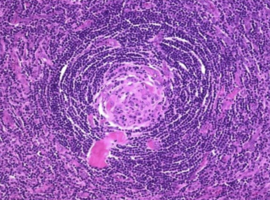Valentina Fischetti*, Caterina Valerii, Fabrizio Palamara, Emanuela Maria Pia Mauri, Antonio Paludetti, Alessandro Aluffi, Silvia Pasulo, Giulia Cannavale, Giulia Vitali, Silvia Porzani and Privato Fenaroli
Breast Surgery Department, ASST Papa Giovanni XXIII, Bergamo, Italy
*Corresponding author: Valentina Fischetti, Breast Surgery Department, ASST Papa Giovanni XXIII, Bergamo, Italy E-mail: vfischetti@ast-pg23.it
Received: August 19, 2025; Accepted: September 02, 2025; Published: September 15, 2025
Citation: Fischetti V, Valerii C, Palamara F, et al. Unicentric Axillary Castleman Disease: A Case Report. J Breast Cancer Case Rep. 2025; 1(1): 104.

